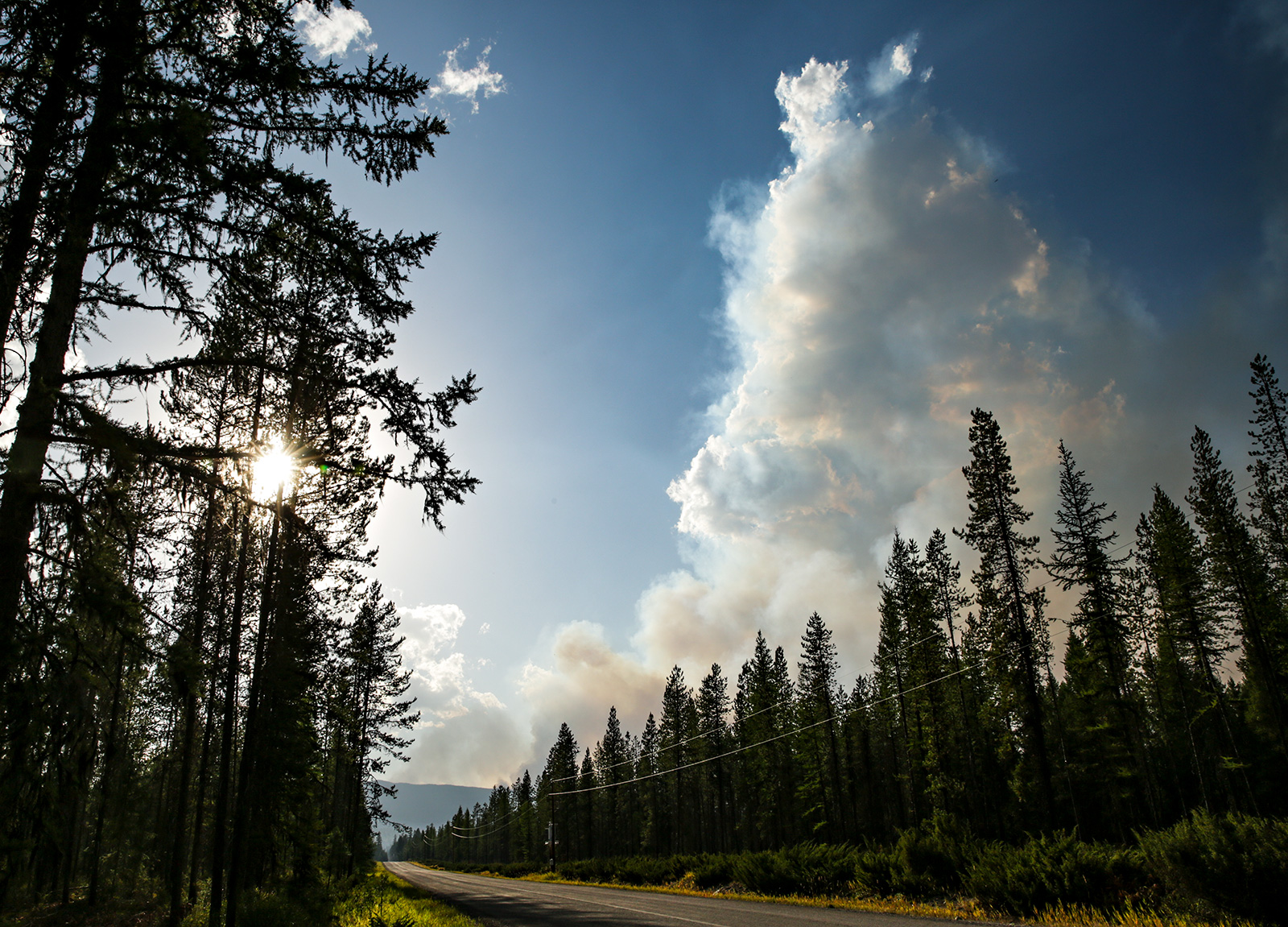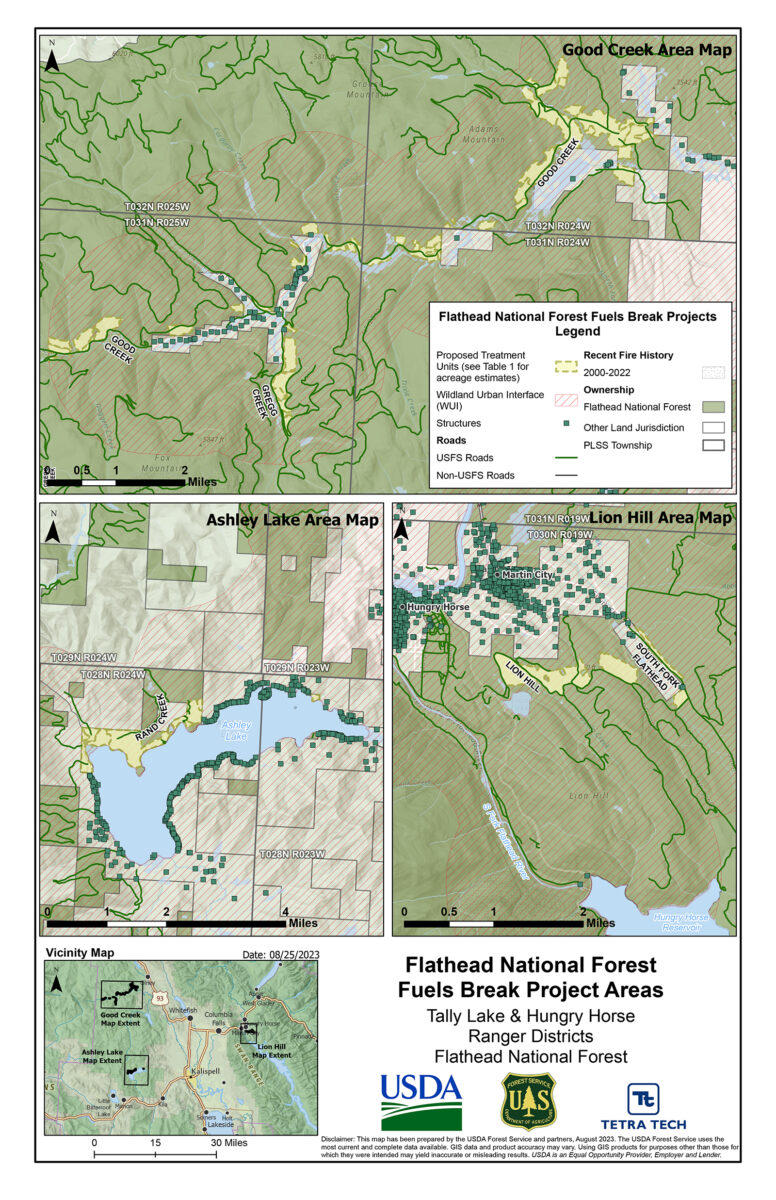Forest Managers Approve Flathead Fuel Break Project to Reduce Wildfire Risk
From Marion to Martin City, land managers are moving forward with three new fuel breaks totaling 1,784 acres as part of a wildfire crisis strategy to protect northwest Montana communities
By Tristan Scott
Land managers with the Flathead National Forest have approved three forest thinning projects totaling 1,784 acres in the Ashley Lake, Good Creek and Lion Hill areas of the Flathead Valley, describing the “fuel breaks” as proactive measures to brace against the threat of catastrophic wildfires, curb their intensity and protect communities stretching from Marion to Martin City.
The fuel break projects are designed to reduce the accumulation of hazardous fuels in strategic locations, according to U.S. Forest Service officials, including near private properties, roads, trails, powerlines, and other infrastructure. The projects, which are authorized under President Joe Biden’s Bipartisan Infrastructure Law, are excluded from documentation in an Environmental Assessment (EA) or Environmental Impact Statement (EIS).
“This project aims to protect communities and critical infrastructure from catastrophic wildfires,” according to a Flathead Forest spokesperson. The decision memo for the Flathead Fuel Break Project was signed July 17.
“Growing wildfire risk is due to accumulating fuels, a warming climate, and expanding development in the
wildland-urban interface,” according to the proposal, which describes a new era of forest management. “The risk has reached crisis proportions in the West, calling for decisive action to protect people and communities and improve forest health and resilience. It will take a paradigm shift in land management across jurisdictional boundaries to reduce risk and restore fire-adapted landscapes.”
The signed decision approves forest treatments that involve thinning the understory along roads to reduce ladder fuels and tree densities, while leaving the mature overstory intact. Each fuel break has a maximum width of 1,000 feet.
The Good Creek and Ashley Lake fuel breaks are located on the Tally Lake Ranger District, while the Lion Hill fuel break is located on the Hungry Horse Ranger District. The Good Creek project will occur southwest of Olney along Good Creek Road. The Ashley Lake fuel break is located along North Ashley Lake Road, north of Marion. The Lion Hill fuel break is located along Lion Hill Road and South Fork Flathead Road just south of Martin City.

“Each year across the nation, fuel breaks are placed in response to an active wildfire. This proposed action would get ahead of those active wildfires, so that the Forest Service can take a more environmentally sound approach then is allowed during the emergency of an actual wildfire,” according to the Flathead National Forest’s proposal released last year. “While these fuel breaks are being proposed to help mitigate some of the effects identified in the wildfire crisis, the sense of urgency in putting these fuel breaks in place is real.”
Although the projects were approved under a categorical exclusion and don’t require additional layers of environmental analysis to proceed, a public comment period last year elicited a mix of support and opposition.
The three-member Flathead County Commission unanimously endorsed the project, as did the state Department of Natural Resources and Conservation’s (DNRC) Northwestern Land Office.
“Providing fuel breaks in advance of wildfire emergencies represents a proactive approach to protecting communities and landscapes from the impacts of uncharacteristic wildfires that are occurring more frequently with changing climate,” wrote Greg Poncin, area manager for the DNRC’s northwestern land office. “The growing number, size, and intensity of wildfires in Montana points to an urgency for action to prepare for wildfire in advance of emergencies. This also provides a more environmentally-sound approach to this action than is possible during the emergency of an actual wildfire.”
Several environmental groups including the Swan View Coalition, Friends of the Wild Swan and Alliance for the Wild Rockies submitted comments urging the Flathead National Forest to complete an EIS or, at a minimum, an EA.
Work on the fuel break projects is slated to begin immediately.
More information about the project can be found on the Fuel Break Project page on the Flathead National Forest’s website at https://www.fs.usda.gov/project/flathead/?project=64699.